Of Old Radios And Related Items--Published Monthly
BOOK REVIEW
The Making of a Scott Second Edition
Opportunity of a LifetimeBY JOHN SLUSSER
WEB EDITION
The following is, indeed, a success story. It's not often that an interest in a particular radio brand leads ultimately to the publication of a book on the subject. Our congratulations to John Slusser on his "opportunity of a lifetime" -- a chance to publish an updated version of "E.H. Scott The Dean of DX." (Editor)
I am not quite sure when I decided that I wanted to focus my personal vintage radio collection on the classics of E.H. Scott Radio Laboratories. When I returned to the hobby in my late 30s after an absence since my teens, I originally wanted to have every classic radio I could find. I know many collectors begin that way. However, it wasn't too long thereafter when the realization hit home that there are thousands and thousands of different radios out there, that one could easily end up mortgaging the home and trying to sell the wife and kids to finance the growing collection, and that the garage, basement, den, living room, kitchen, bedroom, bathroom and doghouse can only hold so many sets.
COMMITMENT TO COLLECTING E.H. SCOTT
One day, perhaps ten years ago or so and not too long into my resurrected hobby, I received a call from a lady who had inherited her father's "real nice shiny radio in a gorgeous cabinet." She went on to say that a plate on the back of the set indicated it had been built by E.H. Scott Radio Laboratories. I had heard a bit about Scott sets but had never seen one.
When I took my first look at the lady's Scott, I was immediately captivated. It had two immaculate chrome chassis, an amazing speaker system, a built-in record player, and a very ornate cabinet. Along with the set, she had all of her father's correspondence with E.H. Scott Radio Laboratories regarding the radio, plus the original invoice, manual, various copies of "Scott News" and other marketing pieces. I purchased the set, returned a bit later the same day with a few strong backs to help transport it home, and spent the rest of that weekend just fascinated with my purchase. I soon identified it as an E.H. Scott Allwave 23 in a Wellington cabinet.
After this experience with my first E.H. Scott radio acquisition, I began to keep my eye out for other Scott sets. It actually wasn't too long before I came across a World War II "boat anchor" set in an antique shop; it turned out to be a Scott SLR-12 morale receiver. Soon thereafter, I found the two chassis and speakers for a Scott FM Philharmonic, an amazing 33-tube set! I guess, upon reflection, it was probably at that point that I was fully hooked and decided I wanted to concentrate my personal collection on Scott radios.
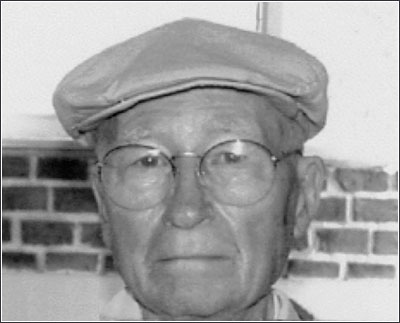
Marvin Hobbs, author of "E.H. Scott ,The Dean of DX."
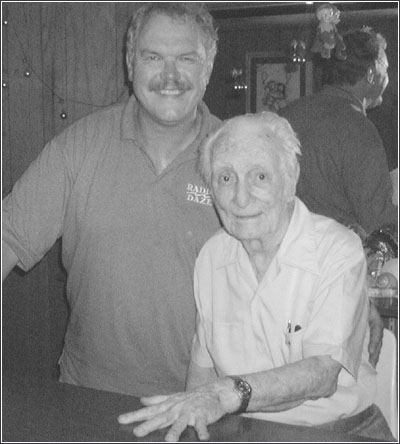
Murray Clay, on the right, was Scott's Chief Engineer prior to Marvin Hobbs. John Slusser, publisher of the Scott second edition, is on the left.
E.H. SCOTT RADIO LABORATORIES
As my collection grew over several years, I became absolutely intrigued not only with Scott products but with the company and its founder, E.H. Scott. Based upon my own engineering and business experience, it appeared to me that E.H. Scott Radio Laboratories had to have been a unique enterprise.
On the product side, Scott Radio was always on the leading edge of technology, and its engineering organization must have included some of the best and brightest in the radio industry. On the business side, the whole concept of selling high-end, made-to-order, custom radio sets during the tough economic times of the Depression would seem in retrospect to be a sure recipe for guaranteed business failure. Yet, somehow, guided by the ambitions and classic marketing and sales savvy of E.H. Scott himself, the company was successful during a period when many others in the radio industry failed. It seemed to me that the story of Scott and his company was a fascinating piece of radio history.
PROPOSAL FOR A SECOND EDITION
About a year and one-half ago, as part of a Scott documentation purchase, I received a copy of a paperback book entitled E.H. Scott, The Dean of DX written by Marvin Hobbs. Marvin had been the Chief Engineer at Scott Radio from 1939 to 1947 and wrote and published the book with a limited printing in 1985. The book was essentially the story of E.H. Scott and his company uniquely written by someone who had lived and contributed to part of the Scott saga. I began to wonder, since the book had been out of print for over 15 years, if there was any way that a new printing could be made so the Scott story could be told to a whole new generation of radio collectors.
In a dialogue with Kent King, a well known E.H. Scott collector and historian, I was astonished to learn that Marvin Hobbs was approaching 90 and was as vigorous as ever. I decided I would contact Marvin to see if he had any interest in a second printing of the book. To me, based upon my great interest in Scott, it was exciting to consider the potential of working with Marvin in such an endeavor.
To my absolute delight, Marvin was most interested in the project. He had accumulated a substantial amount of additional information on Scott and Scott Radio, and it soon was agreed that an expanded second edition of the book was in order. To make a long story short, with Marvin as the author and driving force, with me acting as publisher, and with several key individuals in the Scott and vintage radio collector community offering support, the second edition of E.H. Scott The Dean of DX came together.
For me, it was as if I had been given a "time machine" to relive some radio history via Marvin's first-hand recollections about the history of E.H. Scott and the company before and after his tenure. Marvin's own work at Scott on the introduction of FM, World War II morale receivers and the first presidential aircraft radio would also be part of the picture.
During work on the second edition, I learned that Murray Clay, Scott Chief Engineer prior to Marvin Hobbs and designer of many Scott classic sets, was doing well in his mid-90s. In July 2002, I had the distinct honor of meeting and spending a bit of time with Murray in person. With the second edition now complete, my chance to work with Marvin and meet Murray has truly been a radio collector's dream come true. I now appreciate, with a whole new and greatly enriched perspective, those shiny chrome sets, the great Scott sound and those gorgeous cabinets more than ever. Publishing this book has, for me, been an opportunity of a lifetime.
(John Slussser, c/o Radio Daze, 7 Assembly Drive, Mendon, NY 14506. Tel: 585-624-9755; E-mail: info@radiodaze.com; Fax: 800-456-6494)
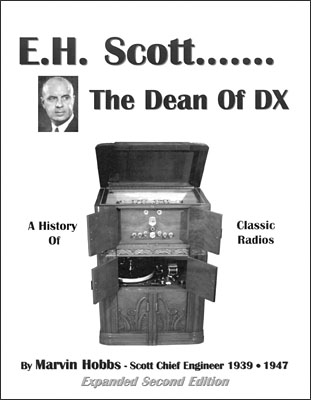
E.H. Scott, Dean of DX -- Second Edition
By Marvin HobbsREVIEWED BY NORMAN S. BRAITHWAITE
WEB EDITION
Without the recollections, research and dedication of Marvin Hobbs, little would be known about the operation of E.H. Scott Radio Laboratories today. Records from the E.H. Scott Radio Laboratories were lost during the many changes of ownership of the atrophying company during the 1950s.
Marvin Hobbs' first edition of E.H. Scott, Dean of DX described the company history and its progression of receivers and documented the AR-1 Presidential Radio used in the Sacred Cow. It also provided the first glimpse into the inner workings of the E.H. Scott Radio Laboratories after they were well established as the builders of the world's finest home receivers.
During the nearly two decades since publication of the first edition, much additional information about the operation and products of E.H. Scott Radio Laboratories has come to light. Of great significance are papers addressing financial difficulties during fiscal year 1938, recently declassified military information and additional knowledge regarding Scott's "Quaranta" receivers. Much of this new information has been incorporated into the second edition to produce the most comprehensive published account yet of the E.H. Scott Radio Laboratories, their products, their war contributions and their demise. Although the second edition of E.H. Scott, Dean of DX is described as "expanded," I would have to describe it as greatly expanded and matured. The 170-page, 5" x 8", black and white first edition has grown to a 240-page, 8" x 11" living color book! New chapters have been added to address the 1938 financial difficulties, wartime receiver production, and development of Radio Corporation of America's "Berkshire" line of high-end radio-phonographs, some with TV. The Berkshire is the only postwar receiver incorporating the ideals and standards of the Scott prewar receivers.
New appendices include patents (illustrations plus descriptions) and circuit diagrams for most Scott models. The patents include several of which I was not aware. For example, the chapter on financial difficulties contains one patent regarding low noise, high volume range sound recording on film, in which the E.H. Scott Radio Laboratories had invested. Marvin was personally involved in some patents about which he supplies additional information.
The circuit diagrams include reproductions of original blueprints containing portions of a 50-tube variant of the Quaranta and circuit diagrams for the AR-1 Presidential Radio. They also include circuit diagrams for the rare and unusual Scott Special Communications Receiver, the only civilian communications receiver ever built by the Laboratories.
Also in the second edition are almost fifty high quality color photos, several of which are the first ever published of the only known surviving example of a 48-Tube Custom Receiver (Quaranta variant). Graphics and formatting have been improved and many illustrations from the Scott News, the E.H. Scott Radio Laboratories news magazine, and Scott advertisements have been included. The second edition of E.H. Scott, Dean of DX should be appreciated by all persons interested in the history and development of radio and military communications, as well as those of us specifically interested in the E.H. Scott Radio Laboratories and their products. Marvin has done an excellent job of resurrecting the lost history of the E.H. Scott Radio Laboratories and their contributions to radio and communications history. Credit is also due John Slusser and Radio Daze for an excellent job of preparing photos and illustrations as well as for publishing the book.
E.H. Scott, Dean of DX, Second Edition is a 240-page, 8" x 11" paperback book with many color, as well as black and white, photos. It may be purchased for $29.95 from Antique Radio Classified, P.O. Box 1558, Port Washington, NY 11050. (516) 883-0505. E-mail: arc@antiqueradio.com or go to our web site at www.antiqueradio.com.
(Norman S. Braithwaite, P.O. Box 2443, Redding, CA 96099)
Scott 48-Tube Custom Receiver -- On Exhibit
COMPILED FROM INFORMATION CONTRIBUTED BY NORMAN B. BRAITHWAITE
Scott receivers have been the subject of several earlier A.R.C. articles by Norman Braithwaite. This report is particularly timely because Norman's Scott receiver in this display was chosen by John Slusser for the cover of "E.H. Scott... The Dean of DX." (Editor)
From October 26, 2002, to January 5, 2003, the Turtle Bay Museum, part of the new Turtle Bay Museum Exploration Park in Redding, California, hosted an exhibit entitled "Inspired Ob-sessions." The exhibit featured unusual and exceptional collections, including a small display of radios.
As part of this exhibit, Norman Braithwaite, longtime collector and contributor to A.R.C., loaned several radios, including the Scott 48-tube custom receiver, displayed for the first time ever to the general public. As many readers know, this is the only complete surviving example of the Scott custom series of receivers -- the Quaranta, the 48-tube custom receiver, and the 50-tube version of the custom receiver. All three cabinets that comprise the complete 48-tube receiver were on display, as shown in Figure 1.
As shown in Figure 2, crystal, battery, cathedral, and breadboard sets, as well as other radio equipment, were also displayed, but as Norm says, "Though all are very significant in themselves, they appear pretty insignificant next to the Scott."
Unfortunately, most of us did not have the opportunity to see the exhibit. And it is unlikely that Norm will offer this receiver for public display again, given the difficulty in moving it and setting it up. However, Norm has written extensively about his receivers and their restoration for A.R.C. We urge you to check out his articles in the February and July, 1987, issues, as well as the September 1988 issue.
(Norman S. Braithwaite, P.O. Box 2443, Redding, CA 96099)
Norman S. Braithwaite, a civil engineer, began collecting radios in 1975, especially those manufactured by E.H. Scott and its competitors. His collection includes representative sets from 1917 to 1960, his prize being the rare Scott 48-tube custom receiver.
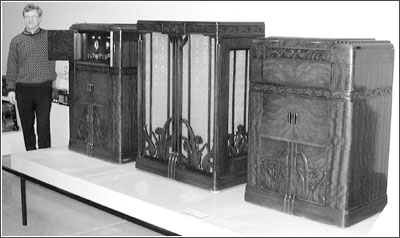
Figure 1. Shown here is Norm Braithwaite with his 3-piece Scott 48-tube custom receiver. This complete receiver was the centerpiece of the radio part of the exhibit at the Turtle Bay Museum in Redding, California.
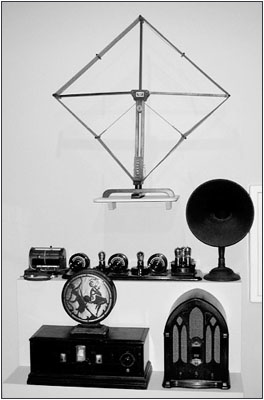
Figure 2. Among the other items in the exhibit was this display of a loop antenna, a crystal set, a bread-board, a horn speaker, a battery set, and a GE cathedral.
| [Books, DVD's, For Sale] [Subscribe to A.R.C./Renew] [Auction Prices] [Event Calendar] [Links] [Home] [Issue Archives] [Book Reviews] [Subscription Information] [A.R.C. FAQ]
For Customer Assistance please contact arc@antiqueradio.com or call 516-883-0505
Antique Radio Classified |